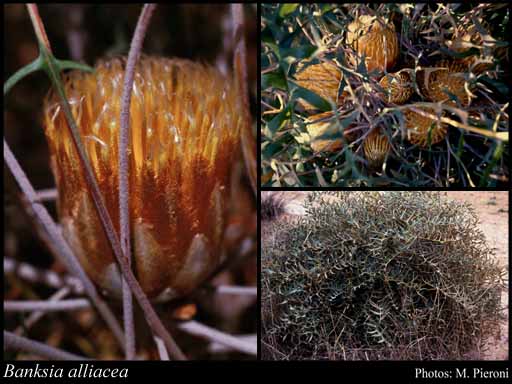- Reference
- Austral.Syst.Bot. 20:65 (2007)
- Conservation Code
- Not threatened
- Naturalised Status
- Native to Western Australia
- Name Status
- Current
Domed, non-lignotuberous shrub, 0.4-2 m high. Fl. yellow-brown, Sep to Dec or Jan to Feb or May. Grey sand, sandy clay, gravel, gravelly loam or clay.

Scientific Description
Shrubs, 0.5-2 m high; branchlets hairy. Leaves petiolate, alternate, 310-610 mm long, 60-130 mm wide, hairy; petiole 50-150 mm long; lamina flat, once divided, pinnately divided, deeply divided or divided to the midrib, with 12-23 lobes on each side, the margins recurved. Inflorescences tomentose (with matted or tangled, soft, woolly hairs) or villous (with soft, shaggy, weak and straight hairs), brown; innermost bracts 27-30 mm long, hairy. Perianth 38-41 mm long, hairy, all over, limb apex silky (with soft, shiny and appressed hairs), without awns; pistil 33-38 mm long, curved, style hairy. Follicles glabrous or hairy, hirsute (with long, rough and coarse hairs), obovate, 15-20 mm long. Flowers in January, February or December. Occurs in the South-west (SW) Botanical Province(s), in the Avon Wheatbelt (AW), Jarrah Forest (JF), Mallee (MAL) or Esperance Plains (ESP) IBRA subregion(s).
Distribution
- IBRA Regions
- Esperance Plains, Jarrah Forest, Mallee.
- IBRA Subregions
- Fitzgerald, Recherche, Southern Jarrah Forest, Western Mallee.
- IMCRA Regions
- WA South Coast.
- Local Government Areas (LGAs)
- Albany, Cranbrook, Esperance, Gnowangerup, Jerramungup, Lake Grace, Plantagenet, Ravensthorpe.